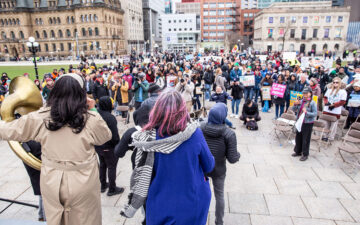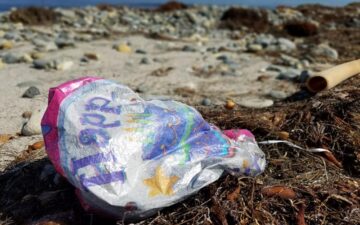By Chris Palmer, TOF Advisory Board Member
We only had two days left and the weather was closing in and getting stormy. We hadn’t gotten the footage we needed yet and our budget was becoming perilously exhausted. Our chances of capturing exciting footage of right whales off Peninsula Valdes in Argentina were diminishing by the hour.
The mood of the film crew was darkening as we began to see the real possibility that after months of exhausting effort we might fail to make a film on what needs to be done to save whales.
For us to save the oceans and defeat those who would ruin and despoil them, we need to seek out and find powerful and dramatic footage that will reach deeply into people’s hearts, but so far all we had captured were unexciting, routine shots.
Desperation was setting in. Within a couple of days, our money would be spent, and even those two days might be cut short by fierce winds and driving rains, making filming virtually impossible.
Our cameras were high up on the cliffs overlooking the bay where mother and calf right whales were nursing and playing—and keeping a wary lookout for predatory sharks.
Our rising panic made us do something we wouldn’t normally consider doing. Usually when we film wildlife, we do our utmost not to interfere or disturb the animals we’re filming. But guided by the eminent whale biologist Dr. Roger Payne, who was also directing the film, we climbed down the cliff to the sea and transmitted the sounds of right whales into the water in an attempt to attract whales into the bay right below are waiting cameras.
After two hours we were elated when a lone right whale came in close and our cameras whirred away getting shots. Our elation turned to euphoria as another whale came in, and then a third.
One of our scientists volunteered to climb down the vertiginous cliffs and swim with the leviathans. She could also check out the condition of the skin of the whales at the same time. She donned a red wet suit and bravely slipped into the water with the sloshing and spraying waves and huge mammals.
She knew that footage of a woman biologist swimming with these massive creatures would make a “money shot,” and she knew the pressure we were under to get such a shot.
As we sat with our cameras watching this scene unfold, mice scurried under foot hiding from predatory birds. But we were oblivious. Our whole focus was on the scene below of the scientist swimming with the whales. Our film’s mission was to promote whale conservation and we knew that cause would be advanced by these shots. Our anxiety about the shoot slowly eased.
About a year later, after many other challenging shoots, we finally created a film called Whales, which helped promote the conservation of whales.
Professor Chris Palmer is the director of American University’s Center for Environmental Filmmaking and author of the Sierra Club book “Shooting in the Wild: An Insider’s Account of Making Movies in the Animal Kingdom.” He is also President of the One World One Ocean Foundation and serves on the Advisory Board of The Ocean Foundation.







